Review:
The Horse and His Boy, by C.S. Lewis
| Illustrator: |
Pauline Baynes |
| Series: |
Chronicles of Narnia #5 |
| Publisher: |
Collier Books |
| Copyright: |
1954 |
| Printing: |
1978 |
| ISBN: |
0-02-044200-9 |
| Format: |
Mass market |
| Pages: |
217 |
The Horse and His Boy was the fifth published book in the
Chronicles of Narnia, but it takes place during the last chapter of
The Lion, the Witch and the Wardrobe, in
the midst of the golden age of Narnia. It's the only true side story of
the series and it doesn't matter much where in sequence you read it, as
long as it's after
The Lion, the Witch and the Wardrobe and before
The Last Battle (which would spoil its ending somewhat).
MAJOR SPOILERS BELOW.
The Horse and His Boy is also the only book of the series that is
not a portal fantasy. The Pevensie kids make an appearance, but as the
ruling kings and queens of Narnia, and only as side characters. The
protagonists are a boy named Shasta, a girl named Aravis, and horses named
Bree and Hwin. Aravis is a Calormene, a native of the desert (and
extremely Orientalist, but more on that later) kingdom to the south of
Narnia and Archenland. Shasta starts the book as the theoretically
adopted son but mostly slave of a Calormene fisherman.
The Horse
and His Boy is the story of their journey from Calormen north to
Archenland and Narnia, just in time to defend Narnia and Archenland from
an invasion.
This story starts with a great hook. Shasta's owner is hosting a passing
Tarkaan, a Calormene lord, and overhears a negotiation to sell Shasta to
the Tarkaan as his slave (and, in the process, revealing that he rescued
Shasta as an infant from a rowboat next to a dead man). Shasta starts
talking to the Tarkaan's horse and is caught by surprise when the horse
talks back. He is a Talking Horse from Narnia, kidnapped as a colt, and
eager to return to Narnia and the North. He convinces Shasta to attempt
to escape with him.
This has so much promise. For once, we're offered a story where one of
the talking animals of Narnia is at least a co-protagonist and has some
agency in the story. Bree takes charge of Shasta, teaches him to ride
(or, mostly, how to fall off a horse), and makes most of the early plans.
Finally, a story that recognizes that Narnia stories don't have to revolve
around the humans!
Unfortunately, Bree is an obnoxious, arrogant character. I wanted to like
him, but he makes it very hard. This gets even worse when Shasta is
thrown together with Aravis, a noble Calormene girl who is escaping an
arranged marriage on her own talking mare, Hwin. Bree is a warhorse, Hwin
is a lady's riding mare, and Lewis apparently knows absolutely nothing
about horses, because every part of Bree's sexist posturing and Hwin's
passive meekness is awful and cringe-worthy. I am not a horse person, so
will link to
Judith Tarr's much more knowledgeable critique at Tor.com, but suffice
it to say that mares are
not meekly deferential or awed by
stallions. If Bree had behaved that way with a real mare, he would have
gotten the crap beaten out of him (which might have improved his attitude
considerably). As is, we have to put up with rather a lot of Bree's
posturing and Hwin (who I liked much better) barely gets a line and acts
disturbingly like she was horribly abused.
This makes me sad, because I like Bree's character arc. He's spent his
whole life being special and different from those around him, and while he
wants to escape this country and return home, he's also gotten used to
being special. In Narnia, he will just be a normal talking horse. To get
everything else he wants, he also has to let go of the idea that he's
someone special. If Lewis had done more with this and made Bree a more
sympathetic character, this could have been very effective. As written,
it only gets a few passing mentions (mostly via Bree being weirdly
obsessed with whether talking horses roll) and is therefore overshadowed
by Shasta's chosen one story and Bree's own arrogant behavior.
The horses aside, this is a passable adventure story with some well-done
moments. The two kids and their horses end up in Tashbaan, the huge
Calormene capital, where they stumble across the Narnians and Shasta is
mistaken for one of their party. Radagast, the prince of Calormen, is
proposing marriage to Susan, and the Narnians are in the process of
realizing he doesn't plan to take no for an answer. Aravis, meanwhile,
has to sneak out of the city via the Tisroc's gardens, which results in
her hiding behind a couch as she hears Radagast's plans to invade
Archenland and Narnia to take Susan as his bride by force. Once reunited,
Shasta, Aravis, and the horses flee across the desert to bring warning to
Archenland and then Narnia.
Of all the Narnia books,
The Horse and His Boy leans the hardest
into the personal savior angle of Christianity. Parts of it, such as
Shasta's ride over the pass into Narnia, have a strong
"Footprints" feel
to them. Most of the events of the book are arranged by Aslan, starting
with Shasta's early life. Readers of the series will know this when a
lion shows up early to herd the horses where they need to go, or when a
cat keeps Shasta company in the desert and frightens away jackals. Shasta
only understands near the end.
I remember this being compelling stuff as a young Christian reader. This
personal attention and life shaping from God is pure Christian wish
fulfillment of the "God has a plan for your life" variety, even more so
than Shasta turning out to be a lost prince. As an adult re-reader, I can
see that Lewis is palming the
theodicy card rather
egregiously. It's great that Aslan was making everything turn out well in
the end, but why did he have to scare the kids and horses half to death in
the process? They were already eager to do what he wanted, but it's
somehow inconceivable that Aslan would simply tell them what to do rather
than manipulate them. There's no obvious in-story justification why he
couldn't have made the experience much less terrifying. Or, for that
matter, prevented Shasta from being kidnapped as an infant in the first
place and solved the problem of Radagast in a more direct way. This sort
of theology takes as an unexamined assumption that a deity must refuse to
use his words and instead do everything in weirdly roundabout and
mysterious ways, which makes even less sense in Narnia than in our world
given how directly and straightforwardly Aslan has acted in previous
books.
It was also obvious to me on re-read how unfair Lewis's strict gender
roles are to Aravis. She's an excellent rider from the start of the book
and has practiced many of the things Shasta struggles to do, but Shasta is
the boy and Aravis is the girl, so Aravis has to have girl adventures
involving tittering princesses, luxurious baths, and eavesdropping behind
couches, whereas Shasta has boy adventures like riding to warn the king or
bringing word to Narnia. There's nothing very objectionable about Shasta
as a character (unlike Bree), but he has such a generic character arc.
The Horse and Her Girl with Aravis and Hwin as protagonists would
have been a more interesting story, and would have helpfully complicated
the whole Narnia and the North story motive.
As for that storyline, wow the racism is strong in this one, starting with
the degree that
The Horse and His Boy is deeply concerned with
people's skin color. Shasta is white, you see, clearly marking him as
from the North because all the Calormenes are dark-skinned. (This makes
even less sense in this fantasy world than in our world because it's
strongly implied in
The Magician's Nephew that all the humans in
Calormen came from Narnia originally.) The Calormenes all talk like
characters from bad translations of the Arabian Nights and are shown as
cruel, corrupt slavers with a culture that's a Orientalist mishmash of
Arab, Persian, and Chinese stereotypes. Everyone is required to say "may
he live forever" after referencing the Tisroc, which is an obvious and
crude parody of Islam. This stereotype fest culminates in the incredibly
bizarre scene that Aravis overhears, in which the grand vizier literally
grovels on the floor while Radagast kicks him and the Tisroc, Radagast's
father, talks about how Narnia's freedom offends him and the barbarian
kingdom would be more profitable and orderly when conquered.
The one point to Lewis's credit is that Aravis is also Calormene, tells
stories in the same style, and is still a protagonist and just as
acceptable to Aslan as Shasta is. It's not enough to overcome the
numerous problems with Lewis's lazy world-building, but it makes me wish
even more that Aravis had gotten her own book and more meaningful scenes
with Aslan.
I had forgotten that Susan appears in this book, although that appearance
doesn't add much to the general problem of Susan in Narnia except perhaps
to hint at Lewis's later awful choices. She is shown considering marriage
to the clearly villainous Radagast, and then only mentioned later with a
weird note that she doesn't ride to war despite being the best archer of
the four. I will say again that it's truly weird to see the Pevensie kids
as (young) adults discussing marriage proposals, international politics,
and border wars while remembering they all get dumped back into their
previous lives as British schoolkids. This had to have had dramatic
effects on their lives that Lewis never showed. (I know, the real answer
is that Lewis is writing these books according to childhood imaginary
adventure logic, where adventures don't have long-term consequences of
that type.)
I will also grumble once more at how weirdly ineffectual Narnians are
until some human comes to tell them what to do. Calormen is obviously a
threat; Susan just escaped from an attempted forced marriage. Archenland
is both their southern line of defense and is an ally separated by a
mountain pass in a country full of talking eagles, among other obvious
messengers. And yet, it falls to Shasta to ride to give warning because
he's the human protagonist of the story. Everyone else seems to be too
busy with quirky domesticity or endless faux-medieval chivalric parties.
The Horse and His Boy was one of my favorites when I was a kid, but
reading as an adult I found it much harder to tolerate Bree or read past
the blatant racial and cultural stereotyping. The bits with Aslan also
felt less magical to me than they did as a kid because I was asking more
questions about why Aslan had to do everything in such an opaque and
perilous way. It's still not a bad adventure; Aravis is a great
character, the bits in Tashbaan are at least memorable, and I still love
the Hermit of the Southern March and want to know more about him. But I
would rank it below the top tier of Narnia books, alongside
Prince Caspian as a book with some great
moments and some serious flaws.
Followed in original publication order by
The Magician's Nephew.
Rating: 7 out of 10
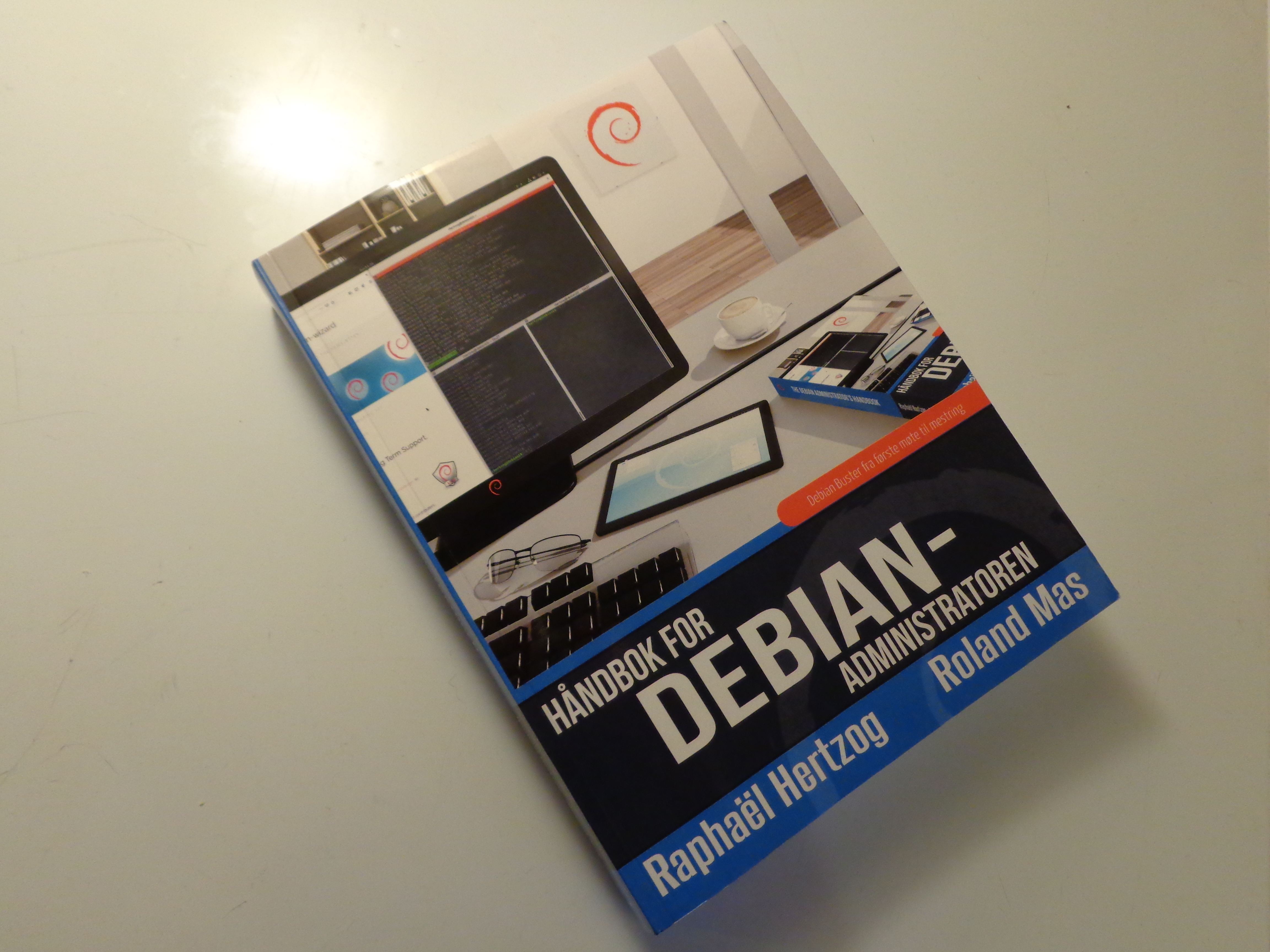 (The picture is of the previous edition.)
Almost two years after the previous Norwegian Bokm l translation of
the "The Debian Administrator's
Handbook" was published, a new edition is finally being prepared. The
english text is updated, and it is time to start working on the
translations. Around 37 percent of the strings have been updated, one
way or another, and the translations starting from a complete Debian Buster
edition now need to bring their translation up from 63% to 100%. The
complete book is licensed using a Creative Commons license, and has
been published in several languages over the years. The translations
are done by volunteers to bring Linux in their native tongue. The
last time I checked, it complete text was available in English,
Norwegian Bokm l, German, Indonesian, Brazil Portuguese and Spanish.
In addition, work has been started for Arabic (Morocco), Catalan,
Chinese (Simplified), Chinese (Traditional), Croatian, Czech, Danish,
Dutch, French, Greek, Italian, Japanese, Korean, Persian, Polish,
Romanian, Russian, Swedish, Turkish and Vietnamese.
The translation is conducted on
the
hosted weblate project page. Prospective translators are
recommeded to subscribe to
the
translators mailing list and should also check out
the instructions for
contributors.
I am one of the Norwegian Bokm l translators of this book, and we
have just started. Your contribution is most welcome.
As usual, if you use Bitcoin and want to show your support of my
activities, please send Bitcoin donations to my address
15oWEoG9dUPovwmUL9KWAnYRtNJEkP1u1b.
(The picture is of the previous edition.)
Almost two years after the previous Norwegian Bokm l translation of
the "The Debian Administrator's
Handbook" was published, a new edition is finally being prepared. The
english text is updated, and it is time to start working on the
translations. Around 37 percent of the strings have been updated, one
way or another, and the translations starting from a complete Debian Buster
edition now need to bring their translation up from 63% to 100%. The
complete book is licensed using a Creative Commons license, and has
been published in several languages over the years. The translations
are done by volunteers to bring Linux in their native tongue. The
last time I checked, it complete text was available in English,
Norwegian Bokm l, German, Indonesian, Brazil Portuguese and Spanish.
In addition, work has been started for Arabic (Morocco), Catalan,
Chinese (Simplified), Chinese (Traditional), Croatian, Czech, Danish,
Dutch, French, Greek, Italian, Japanese, Korean, Persian, Polish,
Romanian, Russian, Swedish, Turkish and Vietnamese.
The translation is conducted on
the
hosted weblate project page. Prospective translators are
recommeded to subscribe to
the
translators mailing list and should also check out
the instructions for
contributors.
I am one of the Norwegian Bokm l translators of this book, and we
have just started. Your contribution is most welcome.
As usual, if you use Bitcoin and want to show your support of my
activities, please send Bitcoin donations to my address
15oWEoG9dUPovwmUL9KWAnYRtNJEkP1u1b.
 More than a month has passed since the last update of TeX Live packages in Debian, so here is a new checkout!
More than a month has passed since the last update of TeX Live packages in Debian, so here is a new checkout!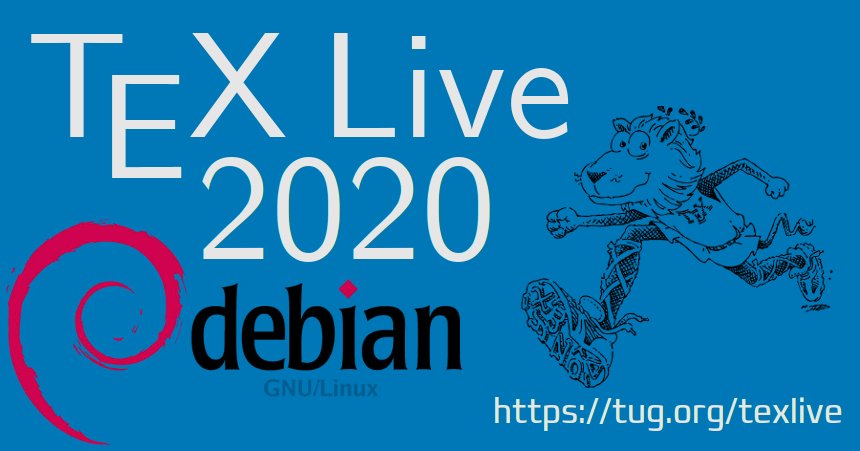 All arch all packages have been updated to the tlnet state as of 2020-06-29, see the detailed update list below.
Enjoy.
New packages
All arch all packages have been updated to the tlnet state as of 2020-06-29, see the detailed update list below.
Enjoy.
New packages
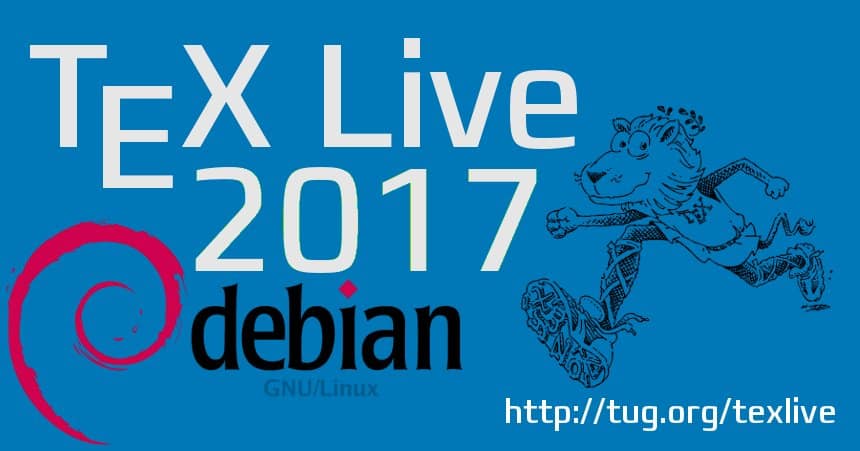 My favorite this time is
My favorite this time is  Around 2 decades back and a bit more I was introduced to computers. The top-line was 386DX which was mainly used as fat servers and some lucky institutions had the 386SX where IF we were lucky we could be able to play some games on it. I was pretty bad at Prince of Persia or most of the games of the era as most of the games depended on lightning reflexes which I didn t possess. Then 1997 happened and I was introduced to GNU/Linux but my love of/for games still continued even though I was bad at most of them. The only saving grace was turn-based RPG s (role-playing games) which didn t have permadeath, so you could plan your next move. Sometimes a wrong decision would lead to getting a place from where it was impossible to move further. As the decision was taken far far break which lead to the tangent, the only recourse was to replay the game which eventually lead to giving most of those kind of games.
Then in/around 2000 Maxis came out with
Around 2 decades back and a bit more I was introduced to computers. The top-line was 386DX which was mainly used as fat servers and some lucky institutions had the 386SX where IF we were lucky we could be able to play some games on it. I was pretty bad at Prince of Persia or most of the games of the era as most of the games depended on lightning reflexes which I didn t possess. Then 1997 happened and I was introduced to GNU/Linux but my love of/for games still continued even though I was bad at most of them. The only saving grace was turn-based RPG s (role-playing games) which didn t have permadeath, so you could plan your next move. Sometimes a wrong decision would lead to getting a place from where it was impossible to move further. As the decision was taken far far break which lead to the tangent, the only recourse was to replay the game which eventually lead to giving most of those kind of games.
Then in/around 2000 Maxis came out with 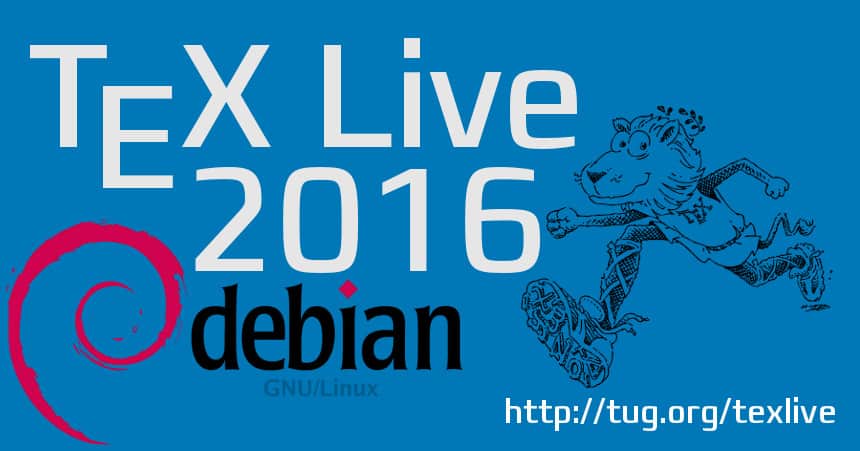 The changes in the binaries are mostly cosmetic: one removal of a non-free (unclear-free) file, and several upstream patches got cherrypicked (dvips, tltexjp contact email, upmendex, dvipdfmx). I played around with including LuaTeX v1.0, but that breaks horribly with the current packages in TeX Live, so I refrained from it. The infrastructure package tex-common got a bugfix for updates from previous releases, and for the other packages there is the usual bunch of updates and new packages. Enjoy!
New packages
The changes in the binaries are mostly cosmetic: one removal of a non-free (unclear-free) file, and several upstream patches got cherrypicked (dvips, tltexjp contact email, upmendex, dvipdfmx). I played around with including LuaTeX v1.0, but that breaks horribly with the current packages in TeX Live, so I refrained from it. The infrastructure package tex-common got a bugfix for updates from previous releases, and for the other packages there is the usual bunch of updates and new packages. Enjoy!
New packages
 I gave a talk about the early days of Linux at the
I gave a talk about the early days of Linux at the
 The biggest changes are with Luatex, where APIs were changed fundamentally and practically each package using luatex specific code needs to be adjusted. Most of the package authors have already uploaded fixed versions to
The biggest changes are with Luatex, where APIs were changed fundamentally and practically each package using luatex specific code needs to be adjusted. Most of the package authors have already uploaded fixed versions to 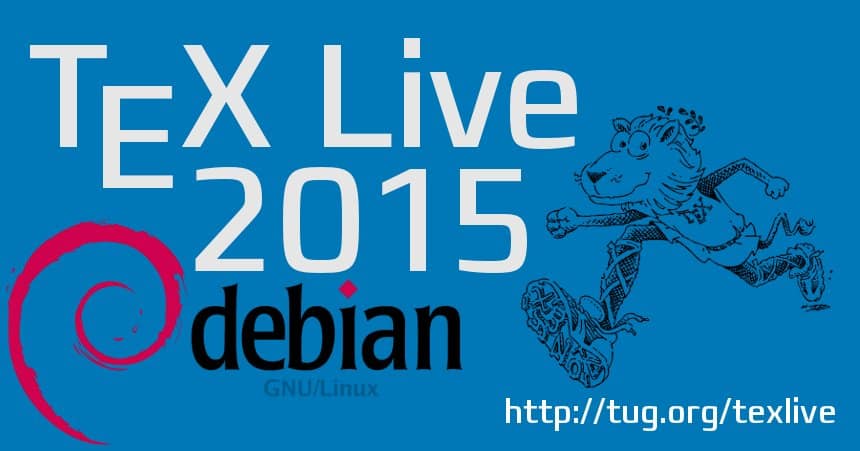 Updated packages
apnum, appendix, archaeologie, babel, babel-french, babel-greek, babel-hungarian, bangorcsthesis, beamer-verona, bhcexam, bibarts, bidi, bxjscls, chemfig, commado, comprehensive, context, cslatex, csplain, ctanify, doclicense, dvips, ejpecp, exsheets, fbb, fibeamer, fithesis, fontools, francais-bst, gitinfo2, glossaries, gnuplottex, greek-fontenc, hyph-utf8, indextools, ksp-thesis, l3build, l3experimental, l3kernel, l3packages, latexcourse-rug, lollipop, lstbayes, lualibs, luaotfload, luatexja, luatexko, luatodonotes, make4ht, mcf2graph, media9, mex, mfirstuc, mhchem, mptopdf, nameauth, nevelok, newtx, nicetext, nucleardata, ocgx2, pageslts, petri-nets, phonrule, pkuthss, powerdot, proofread, proposal, pst-labo, pst-solides3d, reledmac, sapthesis, serbian-lig, showlabels, t2, tcolorbox, tempora, testhyphens, tetex, tex4ebook, tex4ht, texlive-scripts, texsis, thuthesis, toptesi, tudscr, ucharcat, versonotes, xcharter, xepersian, xifthen, xindy, xint.
New packages
beamertheme-detlevcm, beamertheme-metropolis, beamertheme-phnompenh, beamer-verona, bitpattern, carbohydrates, delimseasy, drawmatrix, einfuehrung2, ellipse, ffslides, gitlog, greektonoi, ksp-thesis, longfbox, options, simpler-wick, unicode-data.
Enjoy.
Updated packages
apnum, appendix, archaeologie, babel, babel-french, babel-greek, babel-hungarian, bangorcsthesis, beamer-verona, bhcexam, bibarts, bidi, bxjscls, chemfig, commado, comprehensive, context, cslatex, csplain, ctanify, doclicense, dvips, ejpecp, exsheets, fbb, fibeamer, fithesis, fontools, francais-bst, gitinfo2, glossaries, gnuplottex, greek-fontenc, hyph-utf8, indextools, ksp-thesis, l3build, l3experimental, l3kernel, l3packages, latexcourse-rug, lollipop, lstbayes, lualibs, luaotfload, luatexja, luatexko, luatodonotes, make4ht, mcf2graph, media9, mex, mfirstuc, mhchem, mptopdf, nameauth, nevelok, newtx, nicetext, nucleardata, ocgx2, pageslts, petri-nets, phonrule, pkuthss, powerdot, proofread, proposal, pst-labo, pst-solides3d, reledmac, sapthesis, serbian-lig, showlabels, t2, tcolorbox, tempora, testhyphens, tetex, tex4ebook, tex4ht, texlive-scripts, texsis, thuthesis, toptesi, tudscr, ucharcat, versonotes, xcharter, xepersian, xifthen, xindy, xint.
New packages
beamertheme-detlevcm, beamertheme-metropolis, beamertheme-phnompenh, beamer-verona, bitpattern, carbohydrates, delimseasy, drawmatrix, einfuehrung2, ellipse, ffslides, gitlog, greektonoi, ksp-thesis, longfbox, options, simpler-wick, unicode-data.
Enjoy.

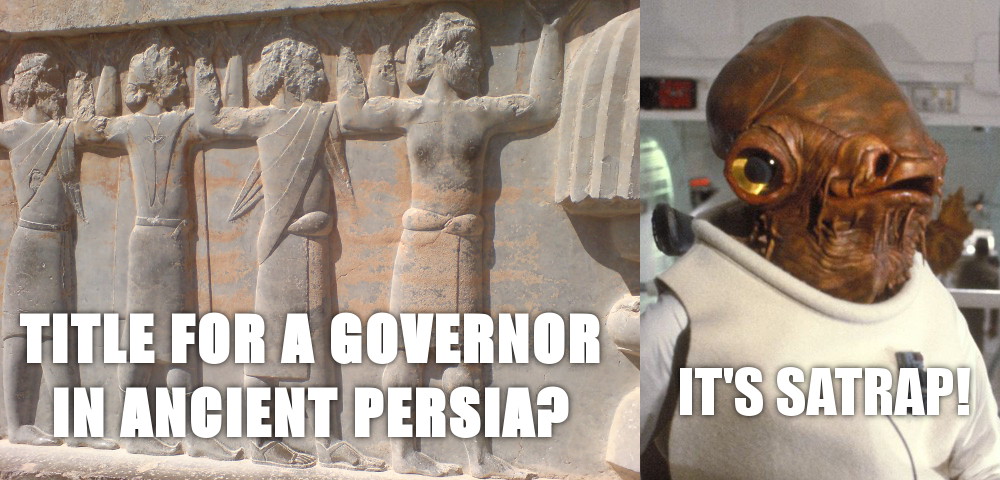
 Harfbuzz (more correctly harfbuzz-ng) is a Text Layout/shaping engine. Mostly supporting rendering
of Text including complex scripts. A quote taken from Wikipedia which describes
Harfbuzz (more correctly harfbuzz-ng) is a Text Layout/shaping engine. Mostly supporting rendering
of Text including complex scripts. A quote taken from Wikipedia which describes  Not much progress ATM (most translations are complete and D-I has been
frozen to prepare its release anyway).
Not much progress ATM (most translations are complete and D-I has been
frozen to prepare its release anyway).